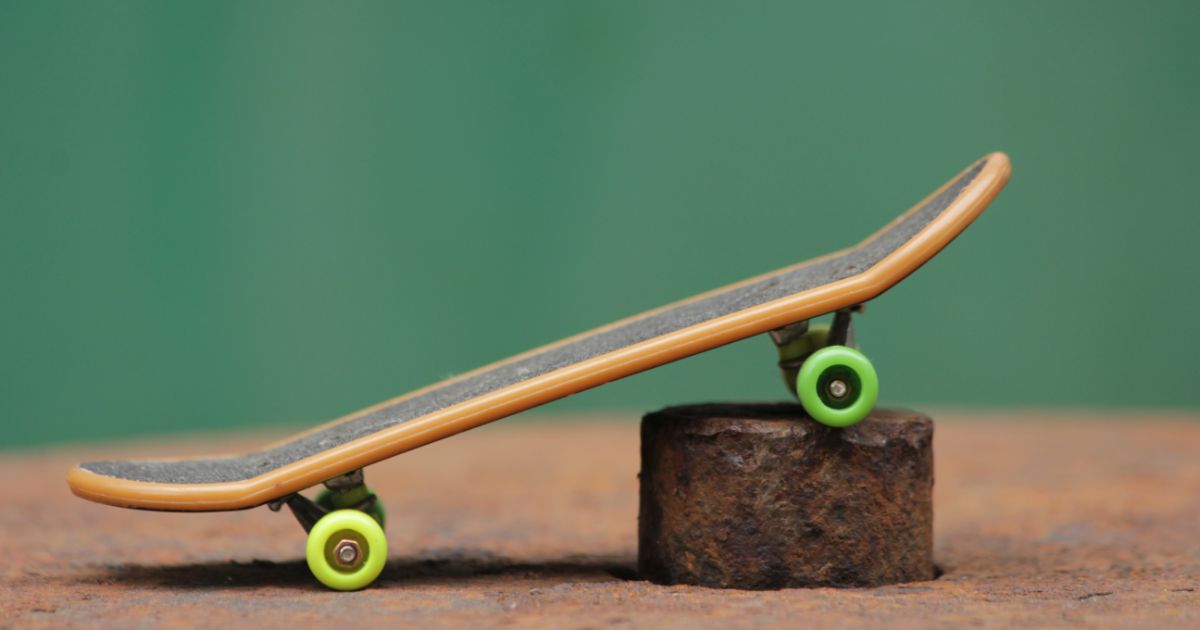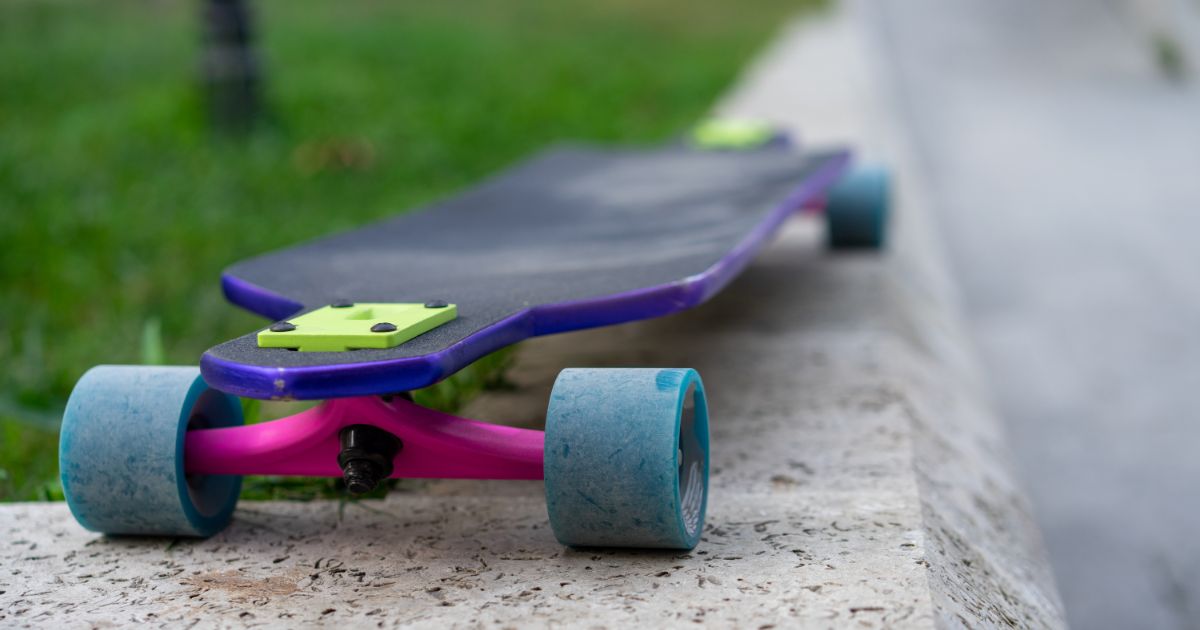What Are Skateboard Bushings?
If you’ve picked up skateboarding recently, you’re probably starting to discover all the fun to be had in customizing your board. Yes, skating is the actual fun part, but customizing your board brings your identity to life in your skating, and can definitely alter your board’s performance as well.
You’ve probably already learned about the most high-profile board customizations, and you might have even heard about this weird term called bushings. If you’re wondering “what are skateboard bushings,” you wouldn’t be alone.
Skateboard bushings, also known as truck bushings, are the little rubber rings that sit around the pin on your trucks. Seems like a small and possibly insignificant part, doesn’t it? Don’t write off your skateboard bushings just yet – they can have a profound impact on exactly how your board performs.
If you want to get the most out of your board, you’ll want to learn all that you can about this odd-sounding rubber ring. You’ll definitely want to make sure you’ve picked the right one for your board.
Colorful Performance Pieces
To understand what bushings are and how they actually affect your board’s performance, you’ll need to understand what skateboard trucks are first. Skateboard trucks are metallic pieces that are bolted to the underside of your skateboard’s body.
The truck’s primary function is to keep your wheels and wheel bearings secured and firmly in place on your board. Trucks are essential to your board’s function, and can allow you some performance customization depending on what you choose.
Trucks have three major construction profiles, including low, medium, and high. Most boarders will unsurprisingly find themselves on medium-height truck profiles. However, some riders might choose low trucks (better for tight tricks) or high trucks (great for cruising and turning but generally used for longboards).
Trucks can also be adjusted in terms of tightness to the actual board. Loose trucks are better for easier turning while tight trucks are great for tight, precise turns. Your skateboard trucks are made up of five major parts, one of which is your skateboard bushings.
Thebushings sit around the central kingpin on your skateboard trucks, which provides cushion and flexibility to the truck joint. Bushings are made from the same polyurethane material that your skateboard’s wheels are made from. The stock bushings are there to allow your board to turn and pivot, and, as such, can be adjusted to affect the sharpness or ease of your turning abilities.
The bushing on top of the trucks is primarily responsible for making your skateboard turn, while the bottom bushing is more about the responsiveness of your board to your turns.
You can’t adjust your bushings, but you can adjust the bottom bushing to a degree by tightening or loosening the nut that holds the kingpin in place. This will by default squeeze the bushing, more or less creating a harder or softer bushing on the bottom. They’re made how they’re made, but you can choose from a number of differently manufactured pieces to affect the quality of your turns.
The primary customization when it comes to skateboard bushings is the hardness of the rubber, and therefore the flexibility of the bushing.
The hardness is measured in “durometers:” you’ll see this represented on infographic charts with the unit “A.” In general, the harder and less flexible your bushing, the harder it will be to turn your board since the trucks and joints won’t have much flexibility. Overall, the harder the bushing, the less responsive your board will be to turning.
Measuring exactly what “hard” means to a skateboard bushing requires more outside information. Your own body weight is the most important determining factor in what “hard” will mean to your bushings, as well as the tightness of your trucks themselves.
For hard trucks, you’ll want to add about 5 A units to the hardness of your barrel bushings to get what would be considered a “harder bushing”. Now, in addition to the flexibility of your bushing, you’ll need to add about 10 A units for each 22 lbs. (10 kg) in your body weight.
So, for example, if you weigh between 154 and 176 lbs. (70 and 80 kg,) and you have loose skateboard trucks, you’ll want to aim for skateboard bushings that are between 86 to 90 A. If you weigh the same but have tight trucks, you’ll want to look for about 91 to 95 A hardness.
Under 154 lbs, (70 kg,) you’ll want between 81 to 85 A for loose and 86 to 90 A for tight trucks, and so on and so forth as your weight increases or decreases. This means that children and younger riders who will be naturally smaller and lighter will want to go for a softer bushing, to get the most from their skateboard.
Changing Shapes
The shape of the bushing will also affect the bushing’s performance and purpose. In general, there are two broad categories for bushing shapes: “taper” and “barrel.”
Taper bushings are called conical bushings due to their cone-shaped appearance, while barrel bushings are straight and do not feature any taper. It’s very important to note that you don’t necessarily need to match the same type of bushing on both sides of your skateboard trucks: you can mix and match a different bushing on top and also underneath your trucks to create some interesting performance options.
In general, conical bushings are more friendly for turning and cutting, while straight bushings are better for overall stability. It’s generally accepted in skateboarding lore that a cone bushing should always be on top of the truck and a barrel bushing should always be below the truck. Most skaters still stick to this setup, but it’s losing ground to double bushing setups that create a more streamlined performance and feel.
If you’re the kind of skater who wants to feel like you’re surfing on water instead of the city streets, a double conical bushing setup will give a much softer feel to the board, especially when turning. There are usually five different constructions of bushings to choose from, in addition to the overall type of bushing.
Play around with the different types and shapes of bushings until you find the combination that gives you the most comfortable and controllable ride. However, the last piece of information you might want to consider when choosing your perfect skateboard bushing is the actual environment that you skate in the most.
If you’re skating on city streets, you’ll probably find a different setup more comfortable than if you’re skating in a skate park more often. The terrain affects your handling and control as much as any other variable: let’s check out how!
The Turf and Your Board
Are you trying to land the best tricks? Do you enjoy the thrill of speed skating down city streets? Your answers will change the skateboard bushing setup that works best for you. If you are a street skater who loves doing technical tricks, your best bet is going to be a cone and barrel combo or a cone/cone combo.
A cone and barrel would be a popular choice, but using a double cone setup will give you a smoother, almost water-like feel to your skating. Once you get used to it, you might find it’s easier to land technical tricks with a double cone setup.
If you’re primarily a park skater and you’re frequently dropping into bowls and verts, stick with the cone/cone setup. You’ll want the extra smooth responsiveness to your turns and some springiness in the truck joint that you’ll get with a double cone setting. It’ll make it easier to get bigger air coming off the bowl and can help you land tricks.
One exception to the rule is longboards. Since longboards are a different type of body setup and construction, you’ll need to treat them differently than a standard skateboard.
The longer body shape can be difficult to control with harder bushings. Whenever you’re skating with a longboard, you’ll want a softer bushing or even a very soft bushing, so your board will lean and allow you to carve swiftly and easily.
The last major style would be for the speed addict downhill racers. Downhill racing is tough: once your speed picks up, any little mistake could spell disaster for your race. Racers need stiffer bushings that offer solid lean resistance so their board remains stiff and stable at very high speeds.
Overall, longboarders probably will encounter the most difficult time choosing the right set of bushings. Longboards can move quite quickly, especially when racing downhill. If your bushings are too soft, you risk exacerbating the natural wobbling that will pick up at high speeds. But if you take bushings that are too stiff to try to mitigate the wobbling, you won’t be able to carve and turn the way a longboard should.
You’ll need to put in a lot of time learning your longboard and really developing a natural feel for it. You should feel free to experiment with different combinations until you find something that really complements your style and helps you ride as you choose.
Remember, you can slightly alter the stiffness of your bottom bushing by tightening the kingpin washer. You can choose a very soft combination of bushings and try to manually tighten the bottom bushing to some degree.
Ultimately, it’s up to you to determine what bushings you like best for your board. Base your decision on what kind of board you like, where you like to ride, if you’re looking for speed or turning ability, and your own body dimensions. Once you figure out which bushings suit your style and your board best, it won’t take you long to notice the difference in your ride!
Why You Should Always Purchase High-Quality Bushings
Like any rubber part, eventually, wear and tear will cause a noticeable degradation in performance. Rubber becomes stiff and brittle as it ages, which will reduce the bounciness and responsiveness of the bushings of your skateboard.
While no rubber will last forever, higher-quality bushings will hold up for longer than their lower-quality, more affordable cousins. Due to the fact that the bushing is primarily responsible for stability and turning assistance, you’ll want to make sure that when you purchase new bushings, they will last for a while and hold up to the demands you’ll place on them.
If you can afford a more expensive bushing, we suggest making the purchase. It will be safer, since it will keep the responsiveness and stability for longer. It may even be cheaper in the long run, since you’ll have more life expectancy from the high-quality part and you won’t need to replace it as often.
Also, consider that bushings are going to take a beating when you ride. They’ll be absorbing most of the forces from the deck lean along with your body weight. They can wear out quite quickly, when you least expect them to.
Putting It Together
Now that you understand the question “what are skateboard bushings,” how they work, and why they’re such an integral part of your skateboard, you’re ready to begin customizing your board to fit your unique style. The number of customization options for your trucks and bushings can be a little overwhelming, but it’s definitely worth it to understand how all the parts work, and work together so you can confidently make modifications to your board.
Once you’re able to tweak your skateboard’s performance by modifying certain parts, you’ll be ready to take your riding to the next level! While personal skill is still the most important factor, having a board that’s ready to complement you will be a safer, more comfortable, and more enjoyable experience!


